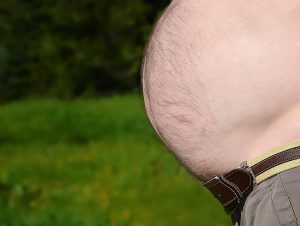
Introduction to Homemade Cat Food
Feeding your cat a homemade diet can be a rewarding experience, offering control over ingredients and ensuring quality nutrition for your feline friend. While commercial cat foods are convenient, preparing homemade cat food allows you to tailor meals to meet the specific dietary needs of your cat. Whether you are a new or experienced cat owner, understanding the nutritional requirements of cats and following safe preparation guidelines is crucial for ensuring your cat’s health and well-being.
Nutritional Needs of Cats
Cats are obligate carnivores, meaning their diet must be primarily composed of meat. They require specific nutrients that are found naturally in animal tissues. Key nutrients include:
- Protein: Essential for growth, maintenance, and repair of tissues.
- Taurine: An amino acid crucial for heart health, vision, and reproductive function.
- Arachnidonic Acid: A fatty acid important for skin and coat health.
- Vitamins: Including vitamins A, D, E, and B-complex vitamins which are vital for various bodily functions.
- Minerals: Such as calcium and phosphorus for strong bones and teeth.
Guidelines for Homemade Cat Food
When preparing homemade cat food, it’s important to maintain a balanced diet. Here are some guidelines to follow:
- Consult with a Veterinarian: Before making any dietary changes, consult your veterinarian to ensure that the new diet meets your cat’s nutritional needs.
- Balance is Key: Homemade cat food should provide a balanced diet that includes protein, fats, vitamins, and minerals.
- Use High-Quality Ingredients: Choose fresh, high-quality meat and avoid using ingredients that are harmful to cats, such as onions and garlic.
- Supplements May Be Necessary: Consider using supplements to ensure your cat receives all the necessary nutrients.
Recipes for Homemade Cat Food
Here are some simple recipes to get you started on preparing homemade cat food:
Chicken and Rice Delight
This recipe provides a good balance of protein and carbohydrates, suitable for most cats.
- Ingredients:
- 1 cup of cooked chicken breast, shredded
- 1/4 cup of cooked brown rice
- 1/4 cup of cooked carrots, mashed
- 1 teaspoon of fish oil
- Instructions:
- Mix all ingredients in a bowl until well combined.
- Serve at room temperature and store leftovers in the refrigerator for up to 3 days.
Fish Feast
Rich in omega-3 fatty acids, this fish-based recipe is excellent for your cat’s skin and coat health.
- Ingredients:
- 1 can of tuna in water, drained
- 1/4 cup of cooked quinoa
- 1/4 cup of steamed peas
- 1 tablespoon of olive oil
- Instructions:
- Combine all ingredients in a bowl and mix thoroughly.
- Serve fresh and refrigerate any remaining portions.
Beef and Veggie Medley
This hearty meal provides a variety of nutrients from different food sources.
- Ingredients:
- 1 cup of ground beef, cooked and drained
- 1/4 cup of cooked sweet potato, mashed
- 1/4 cup of chopped spinach, steamed
- 1 egg, boiled and chopped
- Instructions:
- Mix all ingredients together until well blended.
- Allow the mixture to cool before serving.
Considerations and Cautions
When preparing homemade cat food, it is important to be aware of certain considerations and potential risks:
- Raw Food Diets: While some cat owners consider raw diets, they carry risks of bacterial contamination. If considering a raw diet, consult with a veterinarian to ensure it is nutritionally balanced and safe.
- Food Safety: Practice good hygiene when handling raw meat and ensure all cooking surfaces and utensils are sanitized to prevent bacterial contamination.
- Avoid Harmful Ingredients: Certain foods like chocolate, grapes, raisins, onions, and garlic can be toxic to cats and should be avoided.
Transitioning to Homemade Cat Food
Transitioning your cat to a homemade diet should be done gradually to avoid digestive upsets:
- Start by mixing a small amount of homemade food with their regular diet.
- Gradually increase the proportion of homemade food over a week or two.
- Monitor your cat’s health and stool consistency during the transition. If any issues arise, consult your veterinarian.
Conclusion
Feeding your cat homemade food can be a fulfilling endeavor, allowing you to ensure high-quality nutrition tailored to your cat’s needs. By understanding their nutritional requirements, following guidelines, and consulting with a veterinarian, you can create a balanced and healthy diet for your feline companion. Enjoy the process of preparing meals and watching your cat thrive on a diet crafted with love and care.
#ChatGPT assisted in the creation of this article.








